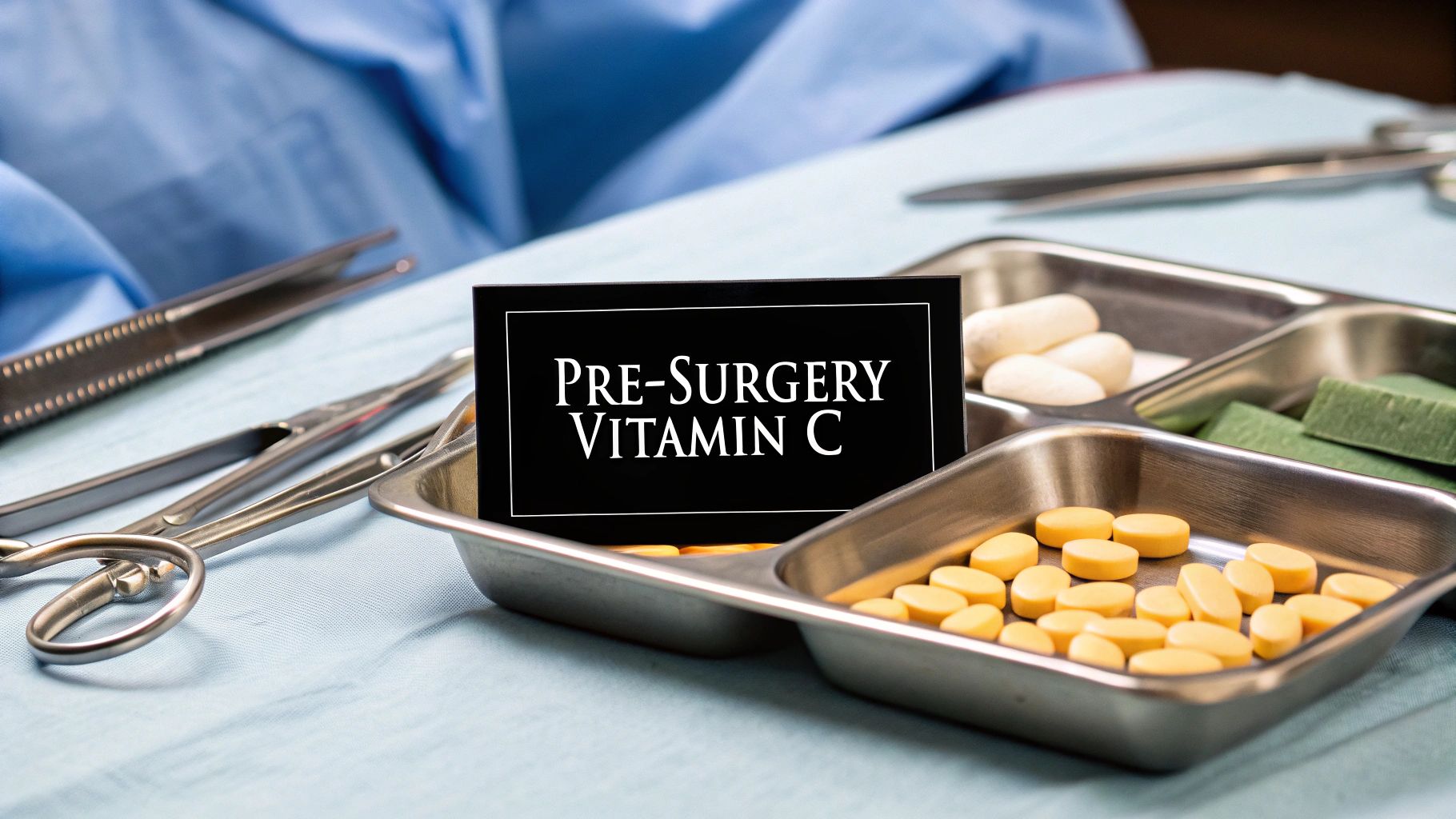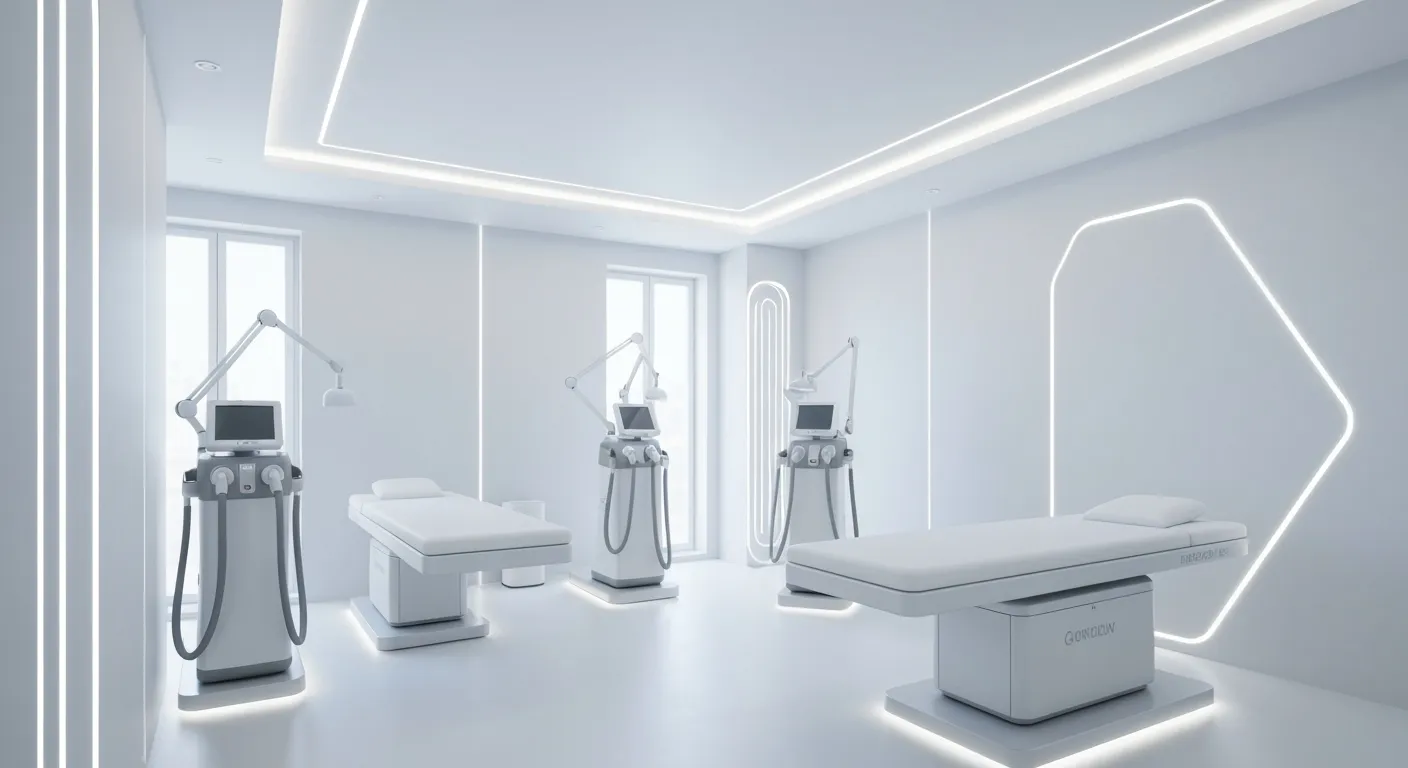
November 22, 2025
Taking Vitamin C Before Surgery An Expert Guide
Considering vitamin C before surgery? This guide covers the science-backed benefits for healing, potential risks, and crucial advice from surgeons.
Oct 6, 2025

Body contouring has become an essential option for individuals seeking to enhance their physique beyond traditional diet and exercise. This comprehensive overview explores the spectrum of body contouring techniques, covering both surgical and non-surgical methods, their mechanisms, benefits, and the evolving trends shaping this popular field. Whether you seek subtle refinements or dramatic transformations, understanding these varied approaches will guide you in making informed decisions tailored to your unique body goals and lifestyle.

Body contouring treatments are designed to reshape the body's appearance by reducing fat, tightening skin, and removing excess tissue. These treatments fall into two broad categories: surgical body contouring procedures and non-surgical body contouring methods.
Surgical body contouring methods are more invasive procedures that often involve general anesthesia, discreet incisions, and longer recovery periods. Typical surgical options include liposuction, tummy tucks (abdominoplasty), body lifts, arm lifts, thigh lifts, and breast or chin lifts. Liposuction directly removes fat deposits through a suction process, providing immediate results. Tummy tucks remove excess skin and tighten abdominal muscles, especially beneficial after significant weight loss or pregnancy. Surgical options tend to deliver more dramatic and rapid results, but they involve higher risks such as scarring, infection, and extended downtime.
Non-surgical body contouring techniques are less invasive, usually performed in-office with minimal recovery time. Popular methods include cryolipolysis (CoolSculpting), laser lipolysis (SculpSure), injection lipolysis (Kybella), radiofrequency treatments, ultrasound, and light-based therapies. These procedures destroy or reduce fat cells using cold, heat, laser, or ultrasound, gradually leading to improvements over weeks. They typically involve little to no discomfort and allow patients to return to normal activities immediately.
Comparison of invasiveness and recovery:
Choosing the appropriate treatment depends on personal goals, health conditions, desired results, and tolerance for downtime. Consulting a board-certified plastic surgeon or qualified specialist helps determine the best approach tailored to individual needs.

Body sculpting techniques employ a range of advanced technologies—each designed to target and reduce unwanted fat, tighten skin, or improve overall body shape. Understanding how these procedures work can help inform your choices.
Surgical procedures, such as liposuction, involve the physical removal of fat deposits. Typically, a surgeon makes small incisions to insert a cannula—a thin tube connected to a suction device—that extracts fat from areas like the abdomen, hips, thighs, or chin. Power-assisted liposuction uses a vibrating cannula for precise removal, leading to smoother results.
On the non-surgical side, several technologies rely on energy-based methods to selectively destroy fat cells or stimulate collagen production. Cryolipolysis, often branded as CoolSculpting, uses precisely controlled cooling to freeze fat cells, causing their death through a process called cryonecrosis. The body's immune system gradually clears these dead cells over several weeks, resulting in a reduction of fat in treated areas.
Heat-based therapies like radiofrequency (RF) and laser lipolysis generate controlled heat to damage fat cells. RF devices, such as Vanquish and ThermiTight, deliver electromagnetic energy that heats the targeted tissue to induce cell necrosis. This process not only destroys fat but also stimulates collagen fibers, resulting in skin tightening.
Similarly, laser lipolysis (e.g., SculpSure, SmartLipo) employs laser energy to raise the temperature of fat tissue, causing thermal injury that leads to fat cell destruction. The laser also promotes collagen formation, which can improve skin firmness.
Ultrasound technology is used in treatments like UltraShape and Liposonix. Focused ultrasound waves penetrate deep into the fat layer without harming surrounding tissues, causing cavitation—the formation of bubbles that disrupt the fat cell membrane—leading to fat cell apoptosis.
Emerging modalities include low-level laser therapy (LLLT), which uses low-intensity laser beams to cause fat cells to release their stored lipids without tissue destruction, and extracorporeal shockwave therapy (ESWT), which applies mechanical shockwaves to remodel collagen and reduce the appearance of cellulite.
Some systems integrate multiple technologies, such as combined fat removal and skin tightening (e.g., Renuvion device technology), resulting in improved aesthetic outcomes.
In summary, these body contouring procedures rely on different mechanisms—freezing, heating, or mechanical disruption—to achieve localized fat reduction, with options tailored based on individual needs and body areas. Most techniques are minimally invasive or non-invasive (Non-Surgical Fat Reduction), offering advantages like reduced downtime and fewer risks, though results often require multiple treatments and are most effective when combined with a healthy lifestyle after body sculpting.

The primary distinctions among body contouring options revolve around their invasiveness, the results they offer, recovery times, and the specific areas they target. Surgical procedures such as liposuction, tummy tucks, and body lifts are highly invasive. They typically require general anesthesia, involve incisions, tissue removal, and sometimes skin tightening. These methods provide immediate and more noticeable results, effectively shaping the body and removing significant excess fat or skin. However, they come with longer recovery periods, risks of scarring, infection, and other complications. Patients generally need several weeks to months to heal fully.
In contrast, non-surgical techniques including cryolipolysis (CoolSculpting), laser lipolysis (SculpSure), radiofrequency treatments (truSculpt®), and injectable deoxycholic acid (Kybella) are minimally invasive or non-invasive. These methods involve no incisions, anesthesia, or significant downtime. They work gradually by destroying or shrinking fat cells through cooling, heating, or laser technology. Results are usually subtle, taking weeks to months to become evident, and they are ideal for patients seeking body refinement rather than dramatic transformation.
Targeted areas also differ: surgical options can address larger or more complex issues, such as extensive skin laxity after weight loss, while non-surgical methods are suited for localized, stubborn fat deposits resistant to diet and exercise.
Ultimately, the choice depends on individual goals, desired results, and willingness to undergo recovery. For those seeking significant, immediate changes, surgical options are more appropriate. Patients looking for a less invasive approach with gradual results may prefer non-surgical body contouring techniques.

Different body contouring techniques present unique benefits tailored to various patient needs and preferences.
Surgical options like liposuction and body lifts offer the advantage of immediate and significant reshaping. They physically remove large amounts of fat, tighten the skin, and provide long-lasting, often permanent, results. These procedures are especially beneficial for individuals with excess skin and substantial fat deposits who seek dramatic improvements in their body contours.
On the other hand, non-surgical methods—such as cryolipolysis (CoolSculpting), injection lipolysis (Kybella), and laser or radiofrequency treatments—are minimally invasive. They typically involve little to no downtime, making them suitable for busy schedules and those apprehensive about surgery. Their safety profiles are favorable, with fewer risks of complications.
In terms of results, surgical procedures generally deliver faster and more noticeable changes right after the procedure, whereas nonsurgical treatments develop gradually over weeks or months as the body naturally eliminates destroyed fat cells.
The longevity of effects varies: surgical results are usually permanent, provided the patient maintains their weight, while nonsurgical results are long-lasting but depend on subsequent lifestyle factors.
Choosing between these methods involves considering personal goals, the level of invasiveness tolerated, and the desired amount of body reshaping. Overall, both approaches have distinct advantages—surgical techniques excel in dramatic and immediate transformation, while non-surgical options provide safer, less invasive alternatives with subtle, gradual improvements.
When considering body contouring procedures, understanding safety and risk factors is essential. Surgical methods like liposuction, tummy tucks, or arm lifts involve incisions and tissue manipulation, which inherently carry a higher risk profile. Common concerns include infection, scarring, bleeding, nerve damage, anesthesia complications, and wound healing issues. These procedures are performed in accredited surgical centers by experienced, board-certified plastic surgeons to minimize risks and optimize outcomes.
Non-surgical or minimally invasive treatments—such as cryolipolysis (CoolSculpting), radiofrequency (RF), ultrasound, and laser lipolysis—are generally safer, with side effects usually limited to mild redness, swelling, bruising, or temporary discomfort. Rare but possible serious complications include paradoxical adipose hyperplasia (PAH), where treated fat areas enlarge, skin nodules, burns, or, very rarely, hernias. These risks underscore the importance of undergoing treatments with licensed professionals in appropriate clinical settings.
The U.S. Food and Drug Administration (FDA) has approved or cleared numerous devices used in non-invasive body contouring. For example, cryolipolysis devices like CoolSculpting, RF-based systems such as Vanquish, and ultrasound treatments like Liposonix have received FDA clearance for safety and effectiveness in targeted fat reduction. However, some procedures—particularly injectable substances like silicone or other non-approved fillers—are not approved by the FDA and pose significant health risks, including embolism, granulomas, or disfigurement.
Patients are advised to consult qualified healthcare professionals to thoroughly understand the personalized risks and benefits of each technique. Reporting any adverse effects to the FDA’s MedWatch program helps monitor safety standards. Overall, non-invasive methods offer a favorable safety profile when performed by licensed practitioners, with most side effects being temporary and minor.
Ideal candidates for body contouring treatments are adults who have achieved weight stabilization, typically at least six months after significant weight loss or pregnancy, and maintain a healthy lifestyle with proper nutrition and fitness. They should be nonsmokers, in good overall health, and free from medical conditions that impair healing or increase surgical risks, such as high BMI over 30, diabetes, or heart disease.
Candidates often have stubborn fat deposits or loose, sagging skin that does not respond to diet and exercise, particularly following bariatric surgery or substantial weight changes. For surgical procedures, stability of weight and realistic expectations are essential, while non-surgical options like cryolipolysis or magnetic muscle stimulation suit those seeking mild to moderate improvements with minimal downtime.
A thorough consultation with a board-certified plastic surgeon is crucial to assess individual goals, body type, skin elasticity, and health status. The evaluation helps in choosing between surgical methods like liposuction or tummy tuck, which provide more dramatic results, and non-surgical techniques such as CoolSculpting or RF skin tightening, which offer subtle, gradual improvements.
Proper assessment ensures that the selected treatment aligns with personal health conditions, body features, and desired outcomes—maximizing safety and satisfaction.

Patients' recovery experiences vary significantly depending on the procedure type. Surgical options such as liposuction, tummy tuck, or body lifts generally involve a recovery period lasting from several weeks to months. During this time, patients may experience swelling and bruising healing, discomfort, and activity restrictions. They might need to care for drains, incisions, or surgical sites, and should follow their surgeon's post-operative care for body contouring instructions closely. Conversely, nonsurgical modalities like CoolSculpting fat reduction, radiofrequency treatments, or laser lipolysis typically involve minimal recovery body contouring. Patients often return immediately to normal routines, with gradual results appearing over the course of weeks. The overall outcomes include a more sculpted and smoother body contour, tighter skin, and an improved aesthetic appearance. Longevity of results often depends on individual factors such as skin elasticity, age, and adherence to a healthy lifestyle after body sculpting. Maintaining healthful habits like balanced nutrition and regular exercise helps prolong the improvements achieved through body contouring.
The field of body contouring continues to evolve rapidly, emphasizing non-invasive and minimally invasive fat reduction treatments that deliver effective results with little to no downtime. Cutting-edge technologies such as laser lipolysis, cryolipolysis (CoolSculpting®), ultrasound-based fat removal, and radiofrequency skin tightening are now standard options, each targeting fat cells or stimulating collagen for skin firmness. A notable recent trend involves combination therapies that leverage multiple modalities—like HIFEM (High-Intensity Focused Electromagnetic) devices such as Emsculpt, which simultaneously build muscle and reduce fat. Innovations like Morpheus8 combine microneedling with radiofrequency to improve skin laxity and contour. The incorporation of artificial intelligence (AI) enhances treatment personalization and outcome prediction, making procedures safer and more tailored to individual anatomy. Additionally, prejuvenation—preventative aesthetic treatments—aims to maintain youthful appearance before signs of aging develop, reflecting a proactive approach in aesthetics. Overall, this technological progress ensures safer, more efficient, and customized solutions aligned with patient demands for effective, no-downtime body shaping options.
Body contouring encompasses a broad array of surgical and non-surgical methods designed to reshape and refine the body’s silhouette by removing fat and tightening skin. Surgical treatments offer dramatic, immediate results suitable for those with significant contouring needs but require longer recovery and carry greater risks. In contrast, non-surgical options provide safer, less invasive alternatives with gradual improvements and minimal downtime, ideal for mild to moderate modifications. Understanding the mechanisms, benefits, risks, and personal suitability factors is essential in selecting the most effective treatment. Advances in technology continue to expand and improve body contouring options, making it increasingly accessible and customizable. Consulting qualified professionals ensures safe, personalized care aligned with your aesthetic goals and lifestyle, empowering you to achieve confident, lasting transformation.

November 22, 2025
Considering vitamin C before surgery? This guide covers the science-backed benefits for healing, potential risks, and crucial advice from surgeons.

November 21, 2025
Does Latisse work for eyebrows? Get the science-backed answer. We explore results, proper use, side effects, and what to expect from this popular treatment.

November 21, 2025
A Comprehensive Overview of Body Contouring: Techniques, Benefits, and Recovery